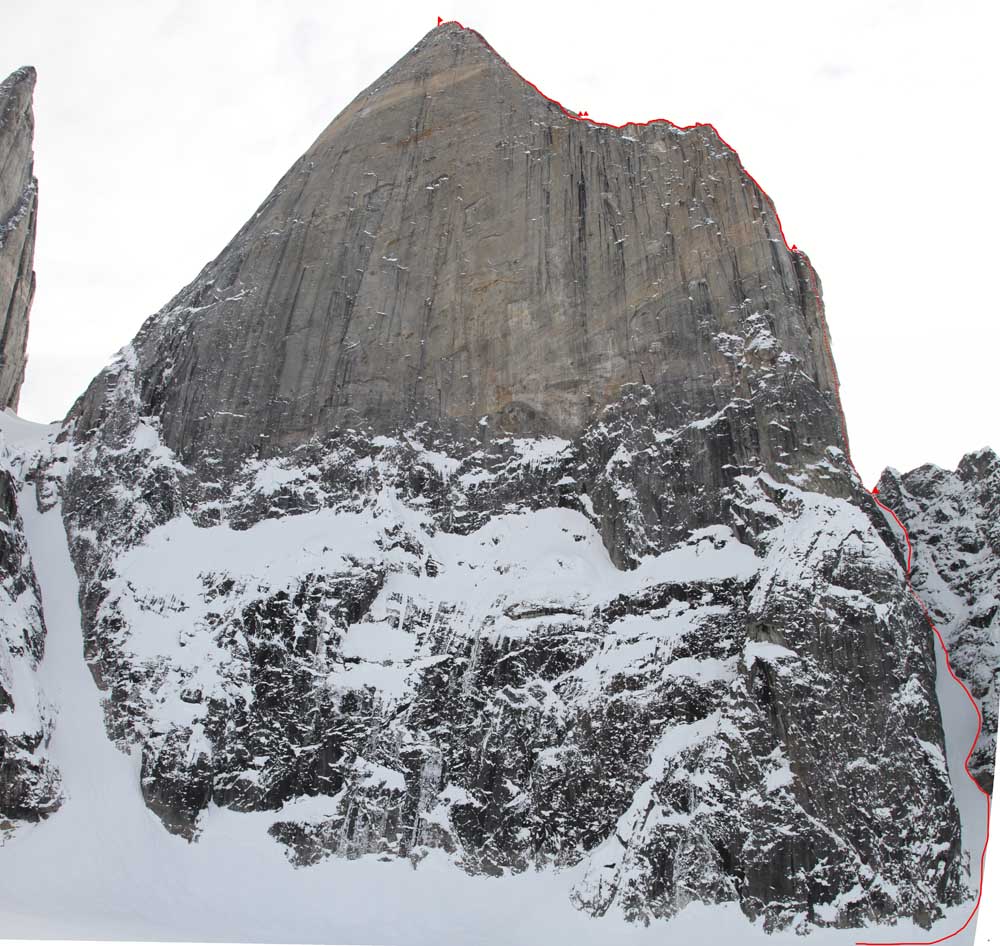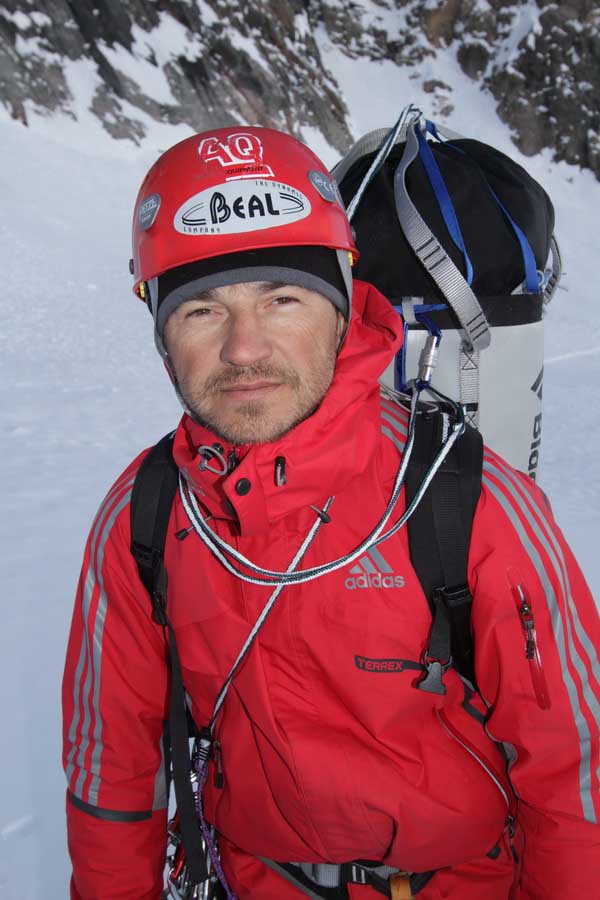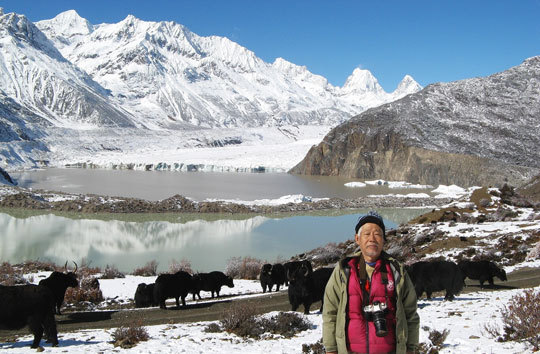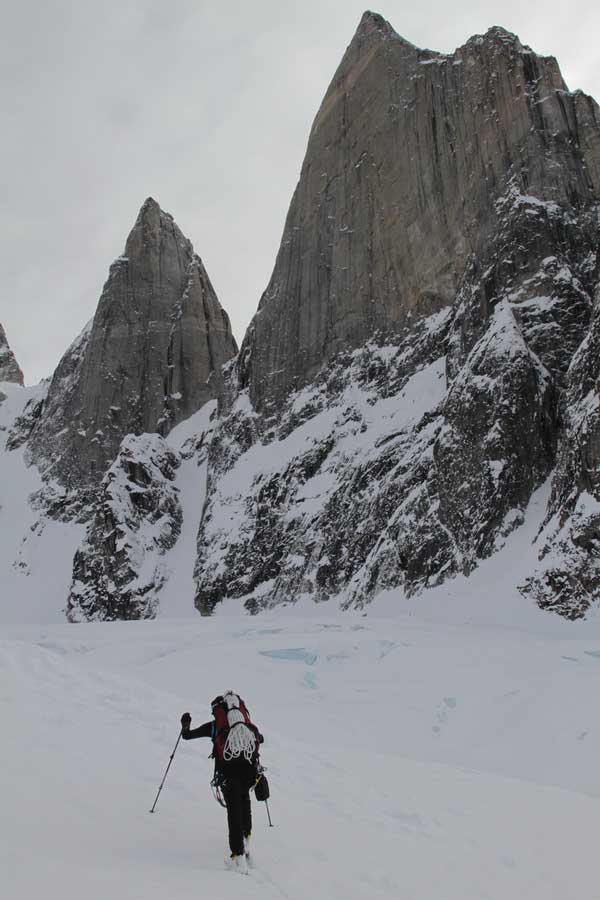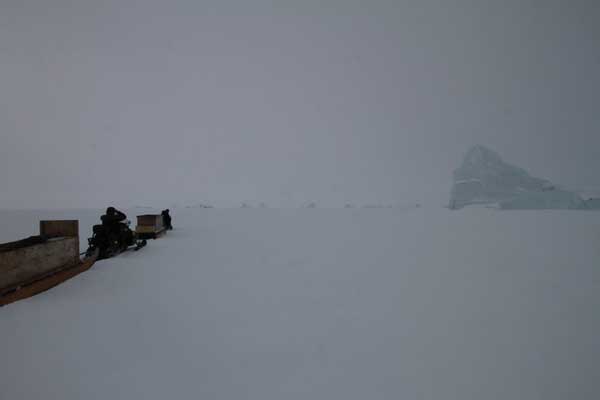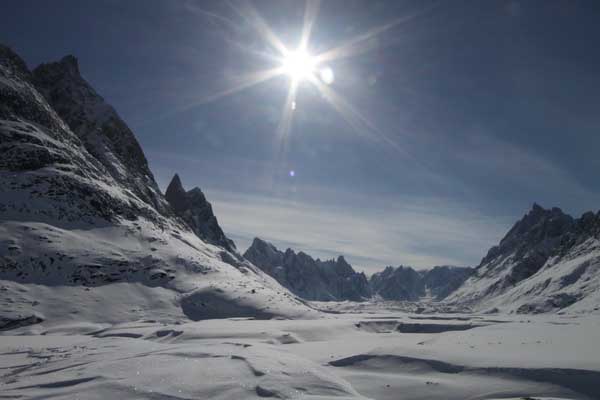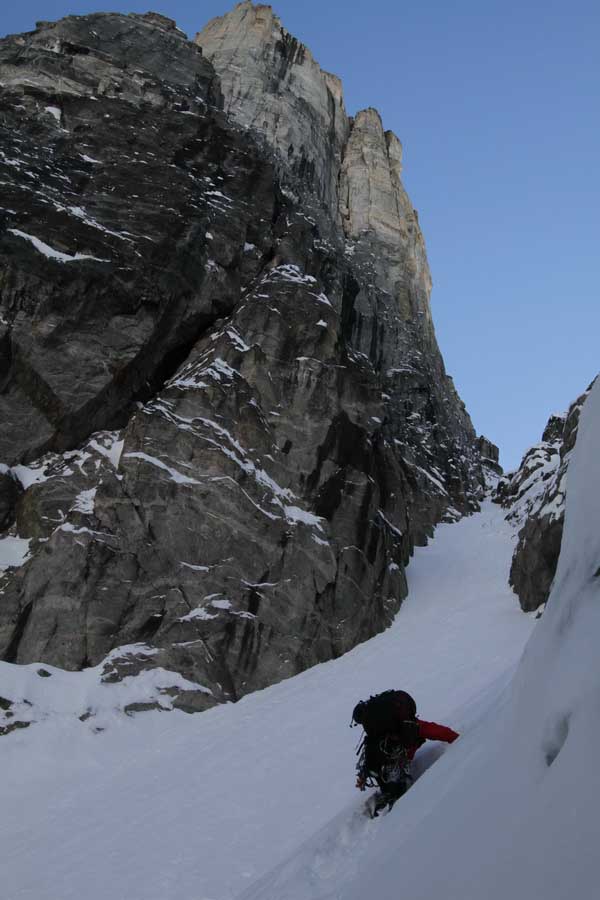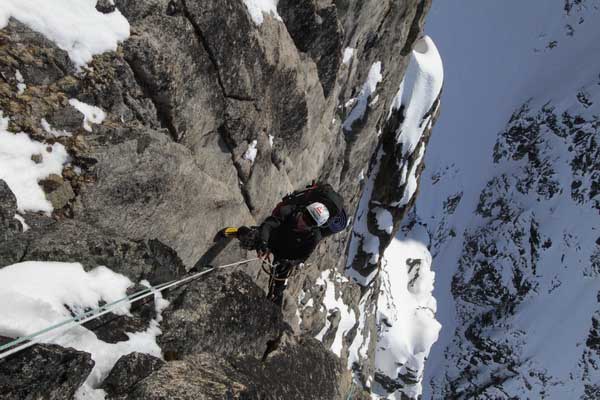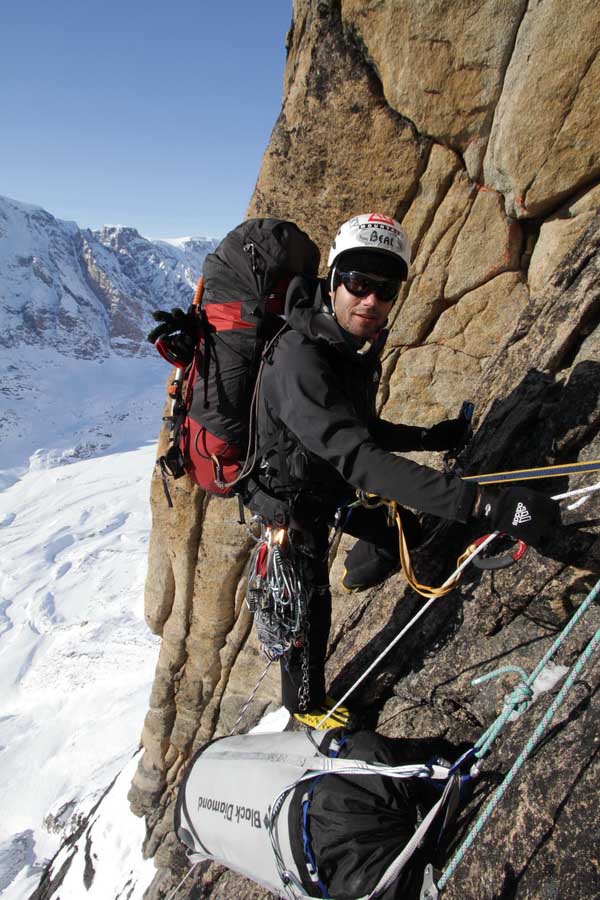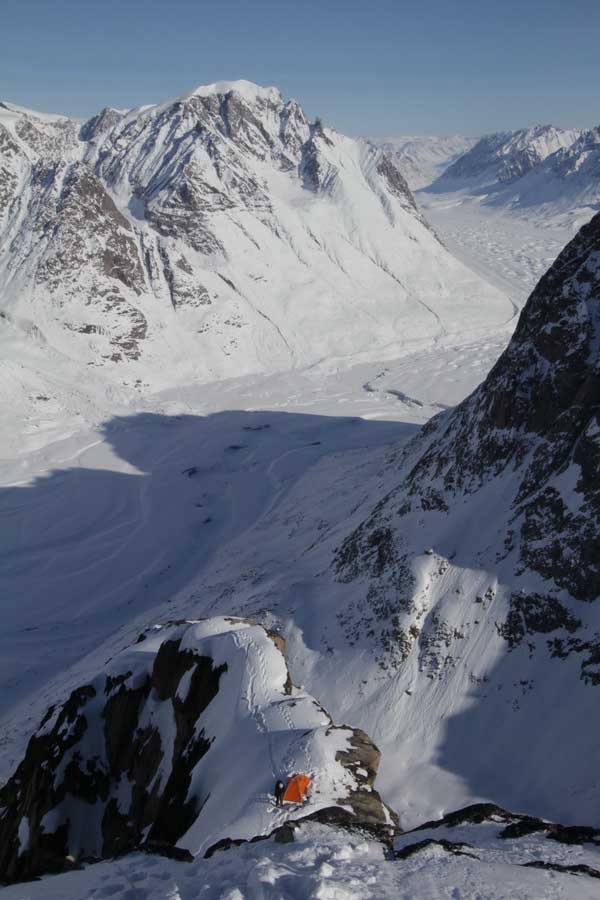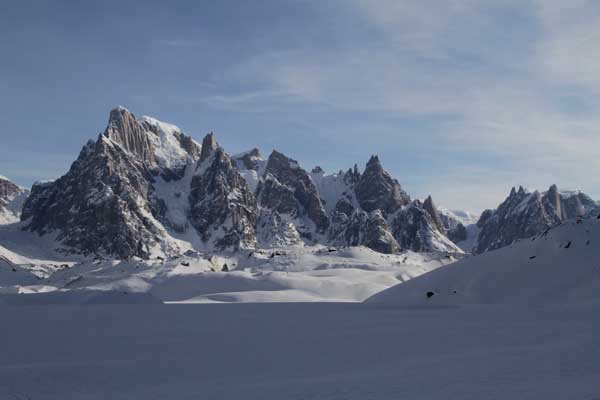

|
Alexander Ruchkin (St. Petersburg) "Search bold, and you will find many magical peaks ...."
Shark Tooth In May 2011, Alexander Ruchkin (St. Petersburg), Mikhail Mikhailov (Bishkek) made the first ascent of Shark's Tooth in Greenland. Expedition chronicle is on the main page. Route describtion: Shark Tooth / Shark Tooth / 1555m - Shark Tooth is beautiful, great, of course.... But how did you find it, and what's the idea to go to Greenland? - There's a lot of unclimbed peaks. And the adventure format is possible yet on this frozen island: you play the game with a lot of unknowns. It's tempting. The harder to reach the object of ascent, the more he beckons. The result is not only climbing, but a kind of the small expedition. Together, this gives a sense of Real Adventure. - In the 60's such format prevailed in the mountaineering. And then ... everything changed, changed, and ... now - look, Edurne Pasaban wrote, that every morning a "taxi" waits in EBC (Everest Base Camp) - helicopter for climbers to Kathmandu. Tears on the mountain - and the next day you can wash in the shower, swim in the pool ... Yes, and the EBC increasingly resembles the base camp in "Vertical Limit". But it isn't easy to kill the spirit of adventure, is it? It seems to me that those who value the Real Adventure, do very similar things in a result - a bold journey plus climbing: for example, the team led by Andrew Lebedev. There're the very interesting projects, where is no distinction between hiking, backpacking, mountaineering ... Do you find that your project has a lot to do with them? - Yes, very close to it. When I started in 2009 the project "The unclimbed peaks", the idea was to get away from the stereotype, accepted by the vast majority of the climbers. Conditions have been already clear: each time the new country, or the new continent, with its culture, people, flora, fauna, mountain system. Previously, I had often seen in the articles: "no more blank spots," the last unsolved problem ... "etc. I couldn't understood, what else really new could be done in mountaineering? And once I got in touch with Tamotsu Nakamura, he wrote that only in Tibet now there're more than three hundred unclimbed peaks!
Tamotsu Nakamura - the famous explorer of Tibet mountains, and advocate for ascents of virgin peaks.Tamotsu Nakamura was born in Tokyo, Japan in 1934. During his years at Hitotsubashi University he studied commerce and accounting, and with the university's mountaineering club he began climbing in the Japanese Alps. In 1961 he took an expedition to Bolivia and Peru, where he made the first ascent of Pucahirca Norte (6046m) in the Cordillera Blanca. He then climbed three more first ascents and several second ascents in Cordillera Apolobamba and Pupuya in Bolivia. After living and working around the world in Pakistan, Mexico, New Zealand and Hong Kong, Nakamura began seriously devoting his life to the mountains of Tibet and western China. Over the past eighteen years he has made thirty expeditions to those areas, where he has discovered, documented and mapped countless unclimbed peaks. These forays have garnered numerous awards from internationally recognized societies. Nakamura has been given the Prince Chichibu Memorial Mountaineering Award (2003), the UIAA Award for contributions to international mountaineering (2007) and, most recently, the Royal Geographical Society's Busk Medal (2008). Nakamura's photographs and writings have been published widely in such journals and magazines as The American Alpine Journal, The Alpine Journal, The Himalayan Journal, Japanese Alpine News, Altitudes, Vertical and Alpinist. (www.alpinist.com)
[Photo] Tamotsu Nakamura This information had become a good kick for me. I began to meticulously gather the information about the unclimbed peaks in whatever area they are. I was helped by friends, the editors of climbing magazines. It turned out, for example, that in Pakistan there're a lot of such peaks. I got many letters: there is something there, that is unclimbed peak ... However, the most of them did not represent a great interest for me, because there're simple snow routes. And I like technical difficulties... Then I narrowed the search, limiting his three conditions: the mountain has to be virgin, beautiful and technically challenging, let there not big wall route. And, beside of this, I actually dreamed about Greenland for a long time, even before Jannu (2004), we planned it with Valery Rozov. But it hadn't been realized that time... I read a lot about Greenland, compared its walls to the walls on the Baffin Island - the same verticals cut steeply to the bay... - And how do you like the Greenland project, which was awarded by Piolet D'Or this year? - I really like it! I would love to be a member of it. - How did you and Misha prepare to the expedition? - You know, basically it was impromptu. My desires run ahead of our abilities. The main our mistake that we began our expedition too early. It would be better to go in July - August: we would not do so many trails in the deep snow...
Shark Teeth Glacier - Have you chosen the climbing objects there for the future? - Yes! There're a lot of great peaks. We have to go there again. We almost had not seen Greenland this time, because there's very bad weather when we flew there. But in summer you can reach the point not far from BC by the boat in the fjord. - You said that you were severely constrained by the equipment because of luggage weight restrictions on the plane? Therefore, you did not have the portaledge, and eventually decided to climb the ridge, not a wall? - Yes, I first became interested in the wall. There's such a good crack at the center of the wall: it's steep :about 80 degrees ... very attractive, close to peak "4810" on Pamir. But the luggage weight restriction of 40 kg forced us to reject such an extreme route. It couldn't been climb without the portaledge in spring - there is no ledges for the tent and too cold for sitting nights. - And, really, your extreme adventures began long before the climb? - Yes, we went by snowmobiles to the place in 10 -12 km to the planned base camp. Drivers worried of they would kill their snowmobiles on a snow covered glacier. We had to carry all our cargo on skis, very slowly. First we went to recon, than carried loads to Shark Tooth bottom. The glacier is cut steeply (10-15 m) to the lake. The trail was hard. Then we began to go quicker: already one day trip. Every day fresh snow covered the trek, and we trail again and again.
snowmobiles caravan and frozen icebergs - What was the first impression of the mountain? - Coincided with the expected. The wall is very difficult, and it's impossible to climb it under such conditions. The weather forecast gave us 5-6 days of good weather. And nothing later... In fact, we got 7 days. In addition, we did not know the height difference on our route. There're peaks around us 1700 m, 2000 m. So, our route could be 1000 m and 1500 m: In short, we choose the ridge route, and didn't regret. It was covered by the sun since the afternoon, and up to 22 hours we could work safely and relatively comfortably.
The view from the glacier - How did you work on the route? - The ascent took four days.
Passage of the couloir Second day.
10/09 pitch The third day.
12th pitch The fourth day.
Bivouac at the crest
On Shark Tooth top - When you climbed in China, and here in Greenland you climbed in duo , and nobody waited you in BC. Was it comfortable? - In such situation you have to climb more gently, with a large margin of safety. Not to risk too much. But I would prefer, of course, that observers're in BC, even just to socialize. But if we need the serious help, we need the party of the same climbing level like ourselves, so they will be able to reach us. Therefore, optimally, to have two parties, which climb the close routes - so they can help to each other. - Did you plan to go all three to Greenland? - We just tried to find the two, which would be interesting to go in this area. Simply to Ski Touring, or a simple mountain route. The man, who planned to go with us, couldn't fly at the last minute. Of course, observers are needed. But that means extra funding. And it is difficult to agree in advance a convenient time for everyone. - And you can get an injury on the mountain? - We had a sat phone, and the ability to call a helicopter. It is unlikely that they would have removed us from the route, they're not the French or Swiss rescuers, well, but we could descend some pitches by ourselves. Jennifer and Innuits, whom we contacted with, knew our coordinates. In addition, we took a great first aid kit, injections could be hold us for several days. - Why didn't you reach BC by a helicopter? - It's twice more expensive ... - Are you satisfied by the equipment? - Yes. I tried AKU boots. It's comfortable. We used Adidas clothes. Thermal underwear was the best between all I've used before. I am delighted that we began to cooperate, though at first they doubted, considering that my age is already declining. Thanks, Artjom Zubkov to convince them that I can: yet! - What do you wish the young climbers, eager to do something bold in mountaineering? - Not afraid of new areas with difficult approaches. Do not waste their time on the same peaks in traditional locations. For three years I've been to three new regions: Tibet, Antarctica and Greenland. Everywhere there are plenty of unclimbed mountains. This is a brand new mountain, untouched by human hands. Among these three regions Greenland is the most accessible in the finance and logistics aspects.
unclimbed mountain about 2000m height
General sponsor of the expedition ADIDAS. Elena Laletina (www.Russianclimb.com) talked with Alexander May 23, 2011
|
